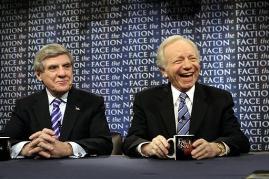Mike Wojcik, Vice President of Horton Benefit Solutions, explains the history of Co-Ops and it turns out there are more failures of health insurance cooperatives than there are success stories.
Click here for the video.
Archive Page 2
Health Care CO-Ops
Published December 8, 2009 Healthcare Reform Leave a CommentTags: Health Care Reform
Big“I” Weekly Health Care Reform Update Report
Published December 7, 2009 Healthcare Reform Leave a CommentTags: Gang of 10, Healthcare Reform, Insurance Industry Regulations, Medicare Expansion, National Insruance Plans, Public Option
WEEK OF DECEMBER 7-11, 2009
Deal or No Deal? That is the question that has perplexed Washington since last Wednesday’s (12/9) announcement of the Gang of 10’s public option compromise. Shortly after the compromise was announced, a few moderate members of the gang explicitly stated that they had by no means signed-off. And by the end of the weekend, the compromise appeared to be on life support when Sen. Lieberman (I-CT) announced he would not support the measure as currently drafted, and Sen. Ben Nelson (D-NE) described the Medicare expansion as “the forerunner of single-payer” (see photo above of Senators Nelson and Lieberman from their Face the Nation appearance on Sunday). With all Republicans currently in opposition to the compromise, the Senate Democratic Leadership is likely at least two votes short of the necessary 60 to end debate on a filibuster and proceed with final passage on their health care reform bill.
What’s the Gang of 10 Compromise?
National Insurance Plans – Several national insurance policies would be created and administered by private not-for-profit companies with rates negotiated by the Office of Personnel Management. This system is intended to resemble the Federal Employees Health Benefits (FEHB) plan that is available to all federal employees, including members of Congress. The national insurance plans would be available in state health insurance exchanges along with private plans.
Insurance Industry Regulations – Insurers would be required to spend at least 90% of premium money on medical care. This requirement would leave insurers with 10% to spend on salaries, administrative costs, commissions, etc. This 90% medical loss ratio (MLR) would have a severe impact on health insurers operating budgets and lead to dramatic cuts – likely to include agent commissions.
Public Option Trigger – There would be a public option trigger. The benchmarks for the trigger have yet to be defined. In theory, the trigger would be pulled if a particular state failed to meet the prescribed benchmarks after a certain number of years.
Medicare expansion – 55-64 year olds would be allowed to buy into Medicare. No details have been released on the estimated benefit costs or scope of coverage.
The truth spoken about the Medicare expansion: “Expanding Medicare is an unvarnished, complete victory for people like me. It’s the mother of all public options. We’ve taken something people know and expanded it. …Never mind the camel’s nose, we’ve got his head and neck under the tent.” – Rep. Anthony Weiner (D-NY); Chicago Tribune; December 10, 2009.
The countdown begins. The Senate Democratic Leadership has until Thursday or Friday to strike a deal that attracts 60 votes in order to set in motion the votes on cloture (60 vote hurdles) to end debate on the health care reform bill and proceed with a vote on final passage prior to Christmas. Otherwise, Senate Majority Leader Reid (D-NV) will miss his deadline, and the Senate will be faced with the prospect of returning to Washington on December 28th to resume consideration of the bill.

